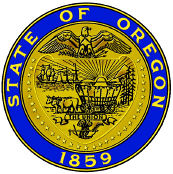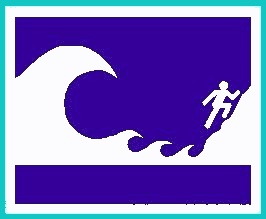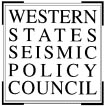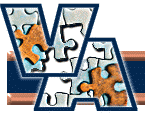|
Working
Party Matters
Membership
| Terms of
Reference |
Task
Allocation |
Intranet
|
Geohazard Communication |
Links |
|
|
Landslides & Slope
Instability
Engineering Geologists | Planners & Developers | Finance & Insurance
| Member of the Public
|
|
Subsidence & Collapse
Hazard
Engineering Geologists | Planners & Developers | Finance & Insurance
| Member of the Public
|
|
Seismic Hazard
Engineering Geologists | Planners & Developers | Finance & Insurance
| Member of the Public
|
|
Flood Hazard
Engineering Geologists |
Planners & Developers | Finance & Insurance | Member of the Public
|
|
Tsunami Hazard
Engineering Geologists |
Planners & Developers | Finance & Insurance | Member of the Public
|
|
Volcanic Hazard
Engineering Geologists | Planners & Developers | Finance & Insurance
| Member of the Public
|
|
Gas Hazard
Engineering Geologists |
Planners & Developers | Finance & Insurance | Member of the Public
|
|
Fault Reactivation Hazard
Engineering Geologists | Planners & Developers | Finance & Insurance
| Member of the Public |
| |
|
Working
Party Matters: Examples of Existing Hazards Web Sites |
 |
|
ABAG Earthquake Maps
and Information
|
 |
| ABAG, the Association of
Bay Area Governments, is the regional planning and services agency for the
nine-county San Francisco Bay Area. |
 |
| Disaster
assessment training manual for SIDS: Introduces and explains
the ECLAC method of disaster assessment training, and disaster preparation and
reduction. It identifies the issues of disaster vulnerability facing SIDS,
including cyclical meteorological phenomena like hurricanes and storms, as well
as geophysical phenomena like earthquakes and volcanic activity. Furthermore, it
provides examples of disaster occurrence, their frequencies and consequences;
discusses land use and vulnerability; and reviews planning approaches and
practices, and coastal tourism policies. |
|

|
Homeowner's Guide to Geologic Hazards:
"How did this happen?" and "Where can I get help?" are usually the first
questions asked by a homeowner threatened by landslides, flooding, subsidence,
or ground-water problems. This guide can help answer those questions.
|
 |
|
Research
/ Landslide
Hazards and Planning /
Planning for Landslides Recent trends in
development in the U.S. suggest that lands subject to landslides and earth
failures are facing increasing pressures to develop. Whereas the land-use
implications of other natural hazards, such as earthquakes or flooding, have
been tended to by federal, state, and local governments, landslide hazards have
not received the same amount of attention. Part of the problem may be due to the
nature of the hazard. Unlike earthquakes or flood hazard areas,
landslide-susceptible areas cannot be easily identified because they depend on
factors beyond slope and terrain characteristics. Although a number of
successful techniques for identifying and mitigating landslide hazards have been
developed through federal programs at USGS and FEMA, little of this information
has reached planners and other public officials at the city, town, county, or
regional levels who's incremental development decisions shape the landscape.
The APA's research
department embarked on a program to bring together solutions from multiple
disciplines into a single source. It will help serve local planning efforts in
identifying landslide hazards sufficiently early in the planning process so as
to minimize exposure to landslide risks. |
 |
| Promoting the
essential role of geological science (geoscience) in environmental management
and planning, and in the identification and mitigation of natural hazards |

|
| The purpose of Oregon
Emergency Management is to execute the Governor's responsibilities to maintain
an emergency services system as prescribed in Oregon Revised Statutes Chapter
401 by planning, preparing and providing for the prevention, mitigation and
management of emergencies or disasters that present a threat to the lives and
property of citizens and visitors to the State of Oregon. |
| Oregon Emergency
Management Plan
|
|
|
 |
|
TSUNAMI! How to survive this hazard on the Oregon
coast. |
 |
The increasing number and severity of
natural disasters over the past decade demands that action be taken to
reduce the threat that hurricanes, tornadoes, severe storms, floods and
fires impose upon the nation's economy and the safety of its citizens.
With
Project Impact: Building Disaster Resistant Communities, FEMA
is changing the way America deals with disasters. Project Impact
helps communities protect themselves from the devastating effects of
natural disasters by taking actions that dramatically reduce disruption
and loss. Follow this link to see
what many Project Impact communities are doing. |
 |
Western
Disaster Center
The mission of the Western Disaster Center (WDC) is to
provide effective and timely dissemination of the essential elements of
information to emergency commanders in the western contiguous United
States. In this mission, the WDC is an operational element of the
evolving U.S. National Disaster Information Network (NDIN), part of the
Global Disaster Information Network (GDIN) concept . |
| The
Institute for Business & Home Safety (IBHS)
is an initiative of the insurance industry to reduce deaths, injuries,
property damage, economic losses and human suffering caused by natural
disasters. It's goal is "Natural disaster safety should be a core
public value. We must change the thinking of our families, friends,
neighbors, and business and community leaders so that we all make
disaster resistance an important consideration in our home and work
environments." |
 |
 |
ExploreZone
This news magazine site has an emphasis on
preparedness through science. This is a must read for everyone
interested in the "How, the Why and the Where Do We Go From
Here" of emergency preparedness. Check it Out! |
American
Red Cross
The national web page for the American Red
Cross. This site is your online resource for finding out about the ARC,
locally, nationally, and worldwide. |
 |
 |
The
National Emergency Management Association
NEMA exists to provide an information and support network among State
Directors and a unified credible voice on critical emergency management
issues to the federal government, private industry and the public. |
The
Emergency Animal Rescue Service (EARS)
The Emergency Animal Rescue Service provides assistance
to domesticated and farm animals, not excluding wildlife when it is
determined necessary, so as to minimize their suffering and to reduce
the number of deaths during both natural and man-made disasters. |
 |
 |
The
Disaster News Network
A service of the Church World Service, this
magazine style website spotlights the human side of disasters. |
Emergency
Managers Weather Information Network
The National Weather Service's EMWIN is a suite of methods of making
available a live datastream of basic weather data, and providing access
to stored sets of basic un-enhanced data, using a variety of techniques
and technologies. |
 |
National
Transportation Safety Board (NTSB)
The National Transportation Safety Board is an independent Federal
agency that investigates every civil aviation accident in the United
States and significant accidents in the other modes of transportation,
conducts special investigations and safety studies, and issues safety
recommendations to prevent future accidents. Safety Board investigators
are on call 24 hours a day, 365 days a year. |
 |
 |
Dr.
David Baldwin's Trauma Info Pages
These Trauma Pages focus primarily on emotional trauma and traumatic
stress, including PTSD (Post-Traumatic Stress Disorder), whether
following individual traumatic experiences or a large-scale disaster.
Information on this site is invaluable to all in the Public
Safety/Emergency Management profession. |
 |
Emergency
Information Infrastructure Partnership
A voluntary association of organizations and
individuals, seeking to enhance their effectiveness in coping with
disasters and emergency situations, by exploring the opportunity for
sharing information and ideas made possible by electronic technology. |
 |
Western
States Seismic Policy Council (WSSPC)
WSSPC is a broad regional forum for earthquake hazard mitigation
technology transfer. WSSPC includes a multidisciplinary membership, and
enhanced emergency management/geoscience partnerships toward earthquake
hazard mitigation. |
| Many
different experts have given us many different opinions about
the many different effects of "El Niņo" and "La
Niņa". Here are a few sites that discuss the phenomenon: |
|
 |
SBA'S
Disaster Assistance Home-Page
The purpose of the SBA's Disaster Loan Program is to offer financial
assistance to those who are trying to rebuild their homes and businesses
in the aftermath of a disaster. From the Federal Government's Small
Business Administration, this page contains timely and useful
information. |
Conservation
OnLine (CoOL)
CoOL, a project of the Preservation Department of Stanford University
Libraries, is a full text library of conservation information, covering
a wide spectrum of topics of interest to those involved with the
conservation of library, archives and museum materials. This is a really
great site for those who want to know about the care of library
materials before, during, and after a disaster. |
 |
Operation
Fresh Start
Operation Fresh Start is an initiative by the US Department of Energy
designed to help individuals and communities incorporate sustainable
principles and technologies into their plans when they recover from a
flood, earthquake, or other disaster. |
 |
 |
NASA's
Natural Disaster Reference Database
The Natural Disaster Reference Database (NDRD) is a bibliographic
database on research, programs, and results which relate to the use of
satellite remote sensing for disaster mitigation. This database focuses
on the nexus of hazards and satellite remote sensing as well as models
and process studies through which these can be brought together. Items
of current and topical interest are also provided. |
Victim-Assistance
Online
Victim-Assistance (V-A) is a relatively new but rapidly
expanding field which seeks to aid the victims and survivors of crime or
tragedy with emotional support, practical aid and advocacy. This page
looks to be a superb source for information for the victims of traumatic
events, and those who assist them. |
 |
 |
Oregon
Forest Fire Information Page
From the Oregon Department of Forestry, this page
contains information on wildland firefighting in Oregon. Included on
this page is current information on: weather conditions, smoke
conditions, situation reports, thunder and lighting maps and forecasts,
and other fire related items. |
North
American Center for Emergency Communications
The North American Center For Emergency Communications Inc. a
Non-profit, publicly supported organization, established as a volunteer
, rapid response organization to assist with large scale disasters
throughout North America and provide both computing technology &
emergency communications to speed aid to the survivors. |
 |
 |
Florida
Special Response Team-A
Florida Special Response Team-A (FL SRT-A) provides
search and rescue and disaster response services to assist people and
communities in times of need. This is achieved through the use of
professionally trained personnel, certified K-9s, and state of the art
equipment. |
Metro
Natural Hazards Page
An important mission of the Metro Natural Hazards Program
is to understand and prepare for natural hazard risks. Metro has joined
with state agencies such as the Oregon Department of Geology and Mineral
Industries, Oregon Emergency Management, local governments, public and
private utility agencies and academic institutions to identify natural
hazards. Risks in the region were determined by relating hazards to the
built environment. |
 |
|